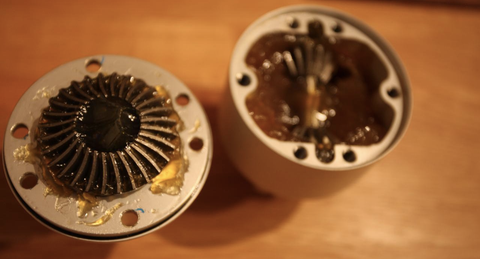Your Electric Trike Needs a Differential
Most electric tricycles have traction problems. In fact, they have the same traction problems that many wheeled vehicles have faced since Rome used chariots, settlers crossed the Great Plains in covered wagons, and Ford introduced the Model A.
Effectively, a differential allows each of an electric trike’s rear wheels to turn independently, improving cornering significantly.
The Solid Axle Problem
When two wheels, like the rear wheels of an eTrike, share an axle they must spin at the same speed.

As long as the wheels are moving in straight lines this is fine. But when, for example, an electric trike needs to make a turn there is a problem. The wheel on the outside of the turn must rotate more quickly than the wheel on the inside since it has further to go.

The wheel on the outside of the turn must travel further and, therefore, needs to turn more quickly. When an electric trike’s back wheels share an axle the outside wheel will slip or hop on turns.
Differential

The differential on the EVELO Compass electric trike solves the solid axle problem.
A differential, like the one on EVELO’s Compass electric trike, avoids the single axle problem and ensures the trike corners well. When the Compass turns it grabs the corner, sending power to both wheels while still allowing the outside wheel to spin more quickly.

An electric trike with a differential will accelerate, corner, and brake more safely and predictably than other electric trikes.
If you would like to learn more about electric bikes generally, please check out The Complete Electric Bike’s Buyer Guide. Also, please take a look at the Compass electric trike. It is one of a very few purpose-built, electric trikes with a differential.
